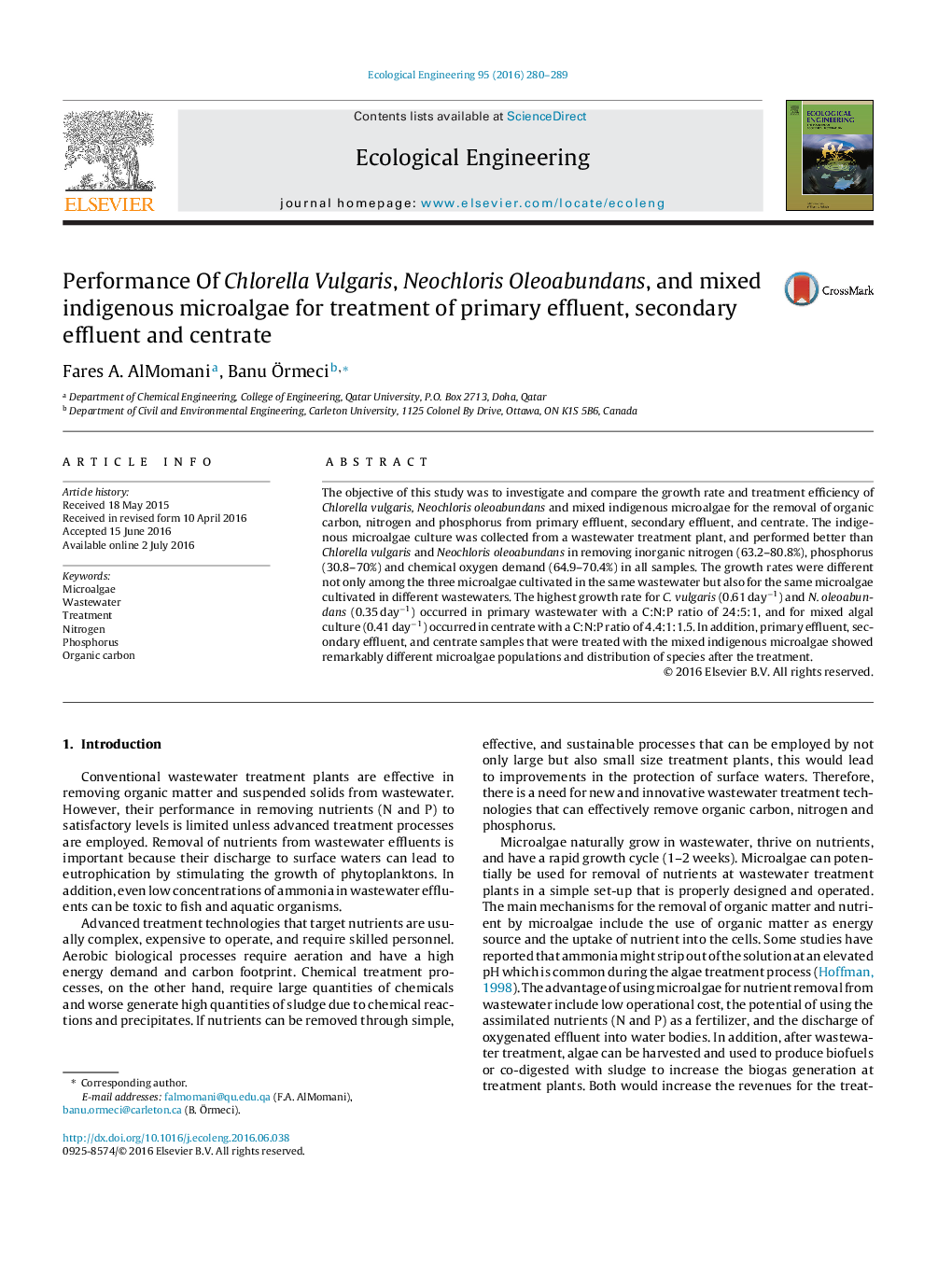| Article ID | Journal | Published Year | Pages | File Type |
|---|---|---|---|---|
| 4388453 | Ecological Engineering | 2016 | 10 Pages |
Abstract
The objective of this study was to investigate and compare the growth rate and treatment efficiency of Chlorella vulgaris, Neochloris oleoabundans and mixed indigenous microalgae for the removal of organic carbon, nitrogen and phosphorus from primary effluent, secondary effluent, and centrate. The indigenous microalgae culture was collected from a wastewater treatment plant, and performed better than Chlorella vulgaris and Neochloris oleoabundans in removing inorganic nitrogen (63.2-80.8%), phosphorus (30.8-70%) and chemical oxygen demand (64.9-70.4%) in all samples. The growth rates were different not only among the three microalgae cultivated in the same wastewater but also for the same microalgae cultivated in different wastewaters. The highest growth rate for C. vulgaris (0.61Â dayâ1) and N. oleoabundans (0.35Â dayâ1) occurred in primary wastewater with a C:N:P ratio of 24:5:1, and for mixed algal culture (0.41Â dayâ1) occurred in centrate with a C:N:P ratio of 4.4:1:1.5. In addition, primary effluent, secondary effluent, and centrate samples that were treated with the mixed indigenous microalgae showed remarkably different microalgae populations and distribution of species after the treatment.
Related Topics
Life Sciences
Agricultural and Biological Sciences
Ecology, Evolution, Behavior and Systematics
Authors
Fares A. AlMomani, Banu Ãrmeci,
